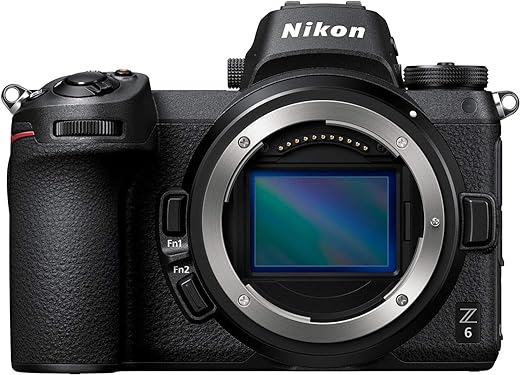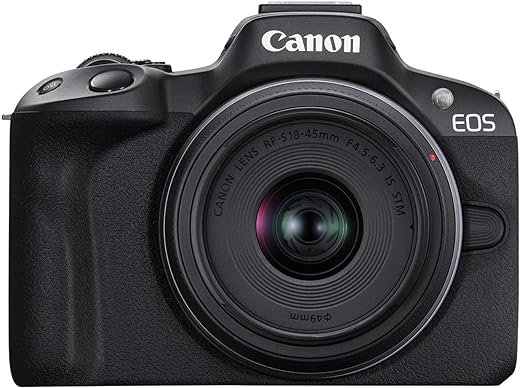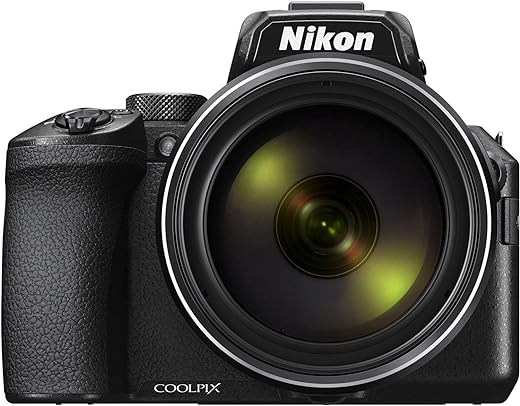Welcome! Today, we are going to delve into the world of Nikon’s Z series cameras by comparing the Nikon Z6 Full Frame Mirrorless Camera and its successor, the Nikon Z 6II Hybrid. These two cameras offer an array of features that cater to the needs of photographers and videographers alike. Let’s explore their differences and similarities to help you choose the best option for your creative endeavors.
Capturing Perfection
The Nikon Z6 Full Frame Mirrorless Camera Body offers revolutionary optical performance with a large Z mount and a 24.5MP backside illuminated image sensor. With features like 273-point on-sensor phase-detect AF system, 12 fps shooting, 4K video, and compatibility with a wide range of NIKKOR Z and F-mount lenses, it is a versatile choice for photographers looking to capture stunning images and videos.
Capturing Moments
The Nikon Z6 II is a versatile full-frame mirrorless camera that excels in both stills and video. With outstanding low-light performance, fast continuous shooting, dual card slots, and compatibility with a wide range of NIKKOR Z and F-mount lenses, this camera is designed for serious photographers and videographers seeking top-notch quality and flexibility.
Nikon Z6 Full Frame Mirrorless Camera
Sensor Resolution
24.5MP BSI
Continuous Shooting Speed
Up to 12 fps
Video Performance
4K Ultra-HD video
Autofocus System
273-Point on-sensor Phase detect AF system
Card Slots
Single slot
Nikon Z 6II Hybrid
Sensor Resolution
24.5MP BSI
Continuous Shooting Speed
14 fps
Video Performance
4K UHD 60p using full pixel readout
Autofocus System
Improved AF performance and functionality
Card Slots
Dual card slots (CFexpress/XQD plus UHS-II SD)
Nikon Z6 Full Frame Mirrorless Camera
Nikon Z 6II Hybrid
Nikon Z6 Full Frame Mirrorless Camera
Nikon Z 6II Hybrid
Comparison Table


Nikon Z6 Full Frame Mirrorless Camera Body
- USPs:
- Excellent low-light performance with wide ISO range.
- In-body image stabilization for steady shots.
- Pros:
- Lightweight and portable design.
- Great color reproduction.
- Cons:
- Single card slot may limit storage options.
- Use-Cases:
- Ideal for photographers needing high-resolution images in low-light conditions.
Nikon Z6 II
- USPs:
- Improved burst shooting speed for capturing fast action.
- Dual card slots for increased storage capacity.
- Pros:
- Fast and accurate autofocus system.
- Extended battery life for longer shooting sessions.
- Cons:
- Slightly heavier compared to Z6.
- Use-Cases:
- Suited for videographers and photographers requiring high-speed shooting capabilities.
Conclusive Assessment:
- If burst shooting and dual card slots are crucial, the Nikon Z 6II is the clear choice.
- For those focused on low-light performance and in-body stabilization, the Nikon Z6 Full Frame Mirrorless Camera Body stands out.
Final Summary: Considering the specific needs of users, the Nikon Z 6II caters to fast-action photographers and videographers, while the Nikon Z6 is more suited to those prioritizing low-light performance and stabilization. Choose based on your primary shooting requirements!
Nikon Z6 vs Nikon Z6 II: A Full Frame Mirrorless Showdown
Comparing Nikon Z6 Full Frame Mirrorless Camera vs Nikon Z6 II Versatile Full-frame Mirrorless Camera
When comparing two high-quality cameras the Nikon Z6 and Nikon Z6 II, it’s important to consider several key factors to make an informed decision. Below are some general guidelines and factors to consider when comparing these two models:
1. Key Differences
- Sensor resolution: Z6 has a 24.5 MP sensor, while Z6 II features a 24.5 MP sensor with better processing capabilities.
- Autofocus system: Z6 has a hybrid AF system with 273 focus points, while Z6 II boasts 273 focus points with improved speed and accuracy.
- Dual card slots: Z 6II offers dual card slots, providing more storage options for photographers.
2. Performance
- Z 6II features a faster continuous shooting speed of up to 14 fps, compared to the Z6’s 12 fps.
- Improved buffer capacity in the Z6 II allows for longer continuous shooting sessions.
3. Image Quality
- Both cameras offer excellent image quality with high-resolution sensors.
- The Z 6II’s improved processing engine delivers better low-light performance and dynamic range.
4. Video Capabilities
- Z 6II offers 4K video recording with full-pixel readout and no crop, providing high-quality video output.
- Z6 also supports 4K video recording but with a slight crop factor.
5. Connectivity and Features
- Both cameras feature built-in Wi-Fi and Bluetooth for easy sharing and remote control.
- Z 6II has a USB-C port for faster data transfer and charging.
6. Price
- Consider the price difference between the two models and whether the additional features of the Z 6II justify the cost.
By considering these factors and comparing the Nikon Z6 Full Frame Mirrorless Camera and Nikon Z6 II Versatile Full-frame Mirrorless Camera based on your specific needs and priorities, you can make an informed decision on which camera best suits your photography requirements.
Nikon Z6 vs Z6 II: Your Ultimate Comparison Guide
When comparing the autofocus performance between the Nikon Z6 and Z6 II, the Z6 II offers improved autofocus capabilities. The Z 6II features a more advanced autofocus system with dual processors, which results in faster and more accurate focusing, especially in challenging lighting conditions. Additionally, the Z 6II has improved subject-tracking performance and eye detection AF. Overall, the autofocus performance of the Z 6II is a significant upgrade from the original Z6 model.
Certainly! The key differences between the Nikon Z6 and Z 6II cameras are:
- Improved Autofocus: The Z6 II features a dual EXPEED 6 image processor which enhances autofocus performance compared to the Z6.
- Dual Card Slots: The Z 6II has dual memory card slots, allowing for greater storage capacity or the ability to backup files simultaneously, which the Z6 lacks.
- Continuous Shooting: The Z6 II offers faster continuous shooting speeds of up to 14 frames per second, compared to the Z6’s 12 frames per second.
- Improved Battery Life: The Z6 II provides improved battery performance, allowing for longer shooting sessions compared to the Z6.
- Video Recording: The Z6 II offers 4K UHD video recording with full pixel readout, plus various video enhancements that make it more versatile for video recording compared to the Z6.
These are some of the key differences between the Nikon Z6 and Z6 II cameras.
Yes, there are notable improvements in image quality with the Nikon Z6 II over the Z6. The Z6 II features a dual EXPEED 6 image-processing engine, which enhances overall image quality, especially in terms of speed, noise reduction, and color accuracy. Additionally, the Z6 II offers improved autofocus performance, which further contributes to better image quality. Overall, the Z6 II provides photographers with enhanced capabilities that can lead to improved image quality compared to the original Z6 model.
When comparing the specifications of the Nikon Z6 and Z 6II, there are several notable differences. The Z6 II features a dual EXPEED 6 image processor compared to the single EXPEED 6 in the Z6, providing improved performance and faster processing speeds. Additionally, the Z6 II offers dual memory card slots for increased storage capacity and flexibility, while the Z6 has a single memory card slot. The Z6 II also boasts improved autofocus performance with increased phase-detection autofocus points and improved subject-tracking capabilities. Overall, the Z6 II builds upon the solid foundation of the Z6, offering enhanced features and performance for photographers and videographers alike.
Absolutely! Existing Z6 users can easily transition to the Z6 II. The Z6 II is designed as an upgrade to the original Z6, retaining many familiar features while also introducing improvements such as dual card slots for added storage flexibility, improved autofocus performance, and increased buffer capacity. The overall handling and menu system remains similar, making the transition seamless for current Z6 users.








3 thoughts on “Nikon Z6 vs Nikon Z6 II”
This article helped me make a decision on which model to go for. Thanks!
I wish there was more focus on low-light performance in the comparison.
Great comparison between the two models, very informative!
Comments are closed.